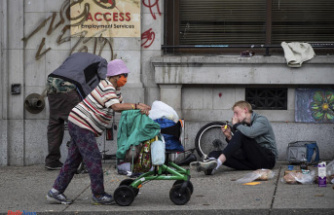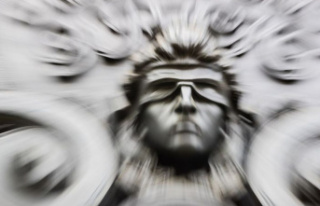Two new studies support the assumption that the corona virus came from an animal market in the Chinese metropolis of Wuhan – and not from a Chinese laboratory. One of the two papers, published by the science magazine Science, evaluated available temporal and spatial data on the first known corona cases in Wuhan.
The researchers found that the earliest cases of Covid-19 in Huanan Market were concentrated among vendors selling live animals or among people shopping there. All eight corona cases in Wuhan that were reported before December 20, 2019 could be traced back to the western part of the market, where live animals such as foxes or raccoon dogs and freshly slaughtered animals are offered.
The research team led by the renowned evolutionary biologist Michael Worobey also looked at the locations of 155 of the first corona infections in Wuhan. Accordingly, they were grouped closely around the Huanan market, while later infections were widely distributed in the metropolis. It is "simply not plausible that this virus was introduced in any way other than through the wild animal trade in the Wuhan market," said Michael Worobey.
The researcher signed an open letter last year calling for the theory of a laboratory accident at the Institute of Virology in Wuhan to be further examined. The knowledge gained since then would have made him rethink, said the virologist.
"Our analysis of the available evidence clearly suggests that the pandemic stemmed from initial human infections from animals for sale at Huanan Market in late November 2019," said Kristian Andersen, a microbiologist at California's Scripps Institute, who also said was involved in the study.
The theory of a laboratory leak has not been refuted. Andersen said it's important to understand "there are possible and probable scenarios. And that possible is not the same as probable.”
The researchers did not specify from which animal species the virus jumped to humans.
In the second study, also published in Science, researchers examined the genetic data of early corona cases with two lineages of the pathogen. Again, the scientists came to the conclusion that both jumped from animals at the market to humans at different events in November and December 2019. It is unlikely that the virus circulated in humans before November 2019, the scientists wrote.
The two studies on the origin of the corona had already been published as so-called preprints. After a review by independent experts, they have now appeared.
The virus first appeared in Wuhan at the end of 2019. However, a team of experts from the World Health Organization (WHO) were only allowed to travel to China more than 12 months later and had returned with no clear results. The team then said it wasn't entirely clear if the market was the actual outcome of the pandemic.
At the time, the WHO experts classified the laboratory theory as “extremely unlikely”. Doubts and criticism quickly arose about the report and the investigation itself.
China does not want to allow another on-site investigation.












